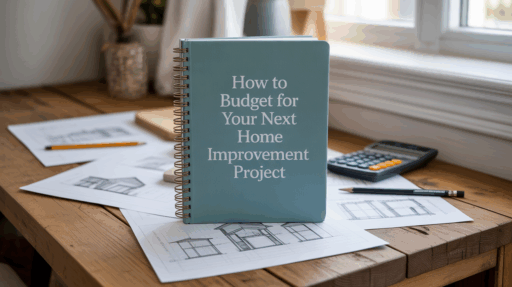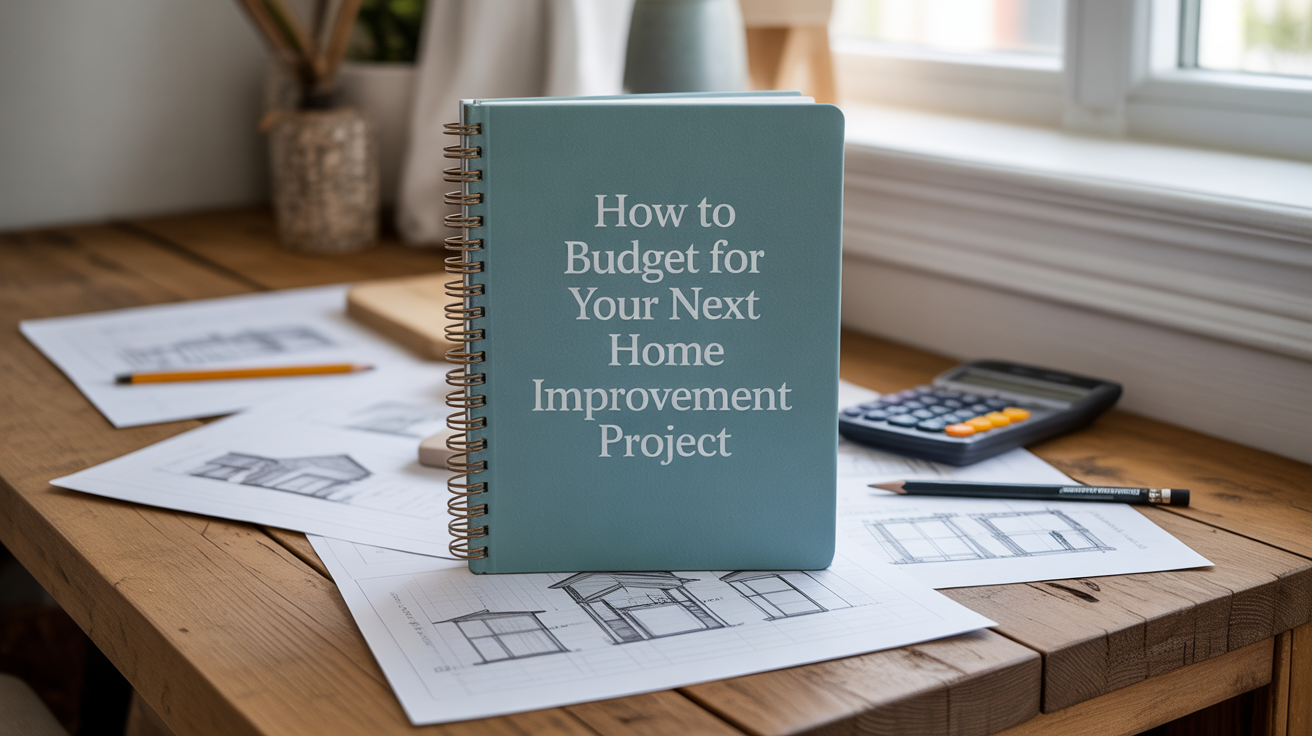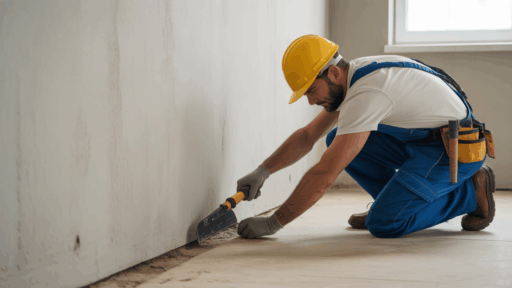Planning a home improvement project? Whether you’re remodeling your kitchen, revamping your bathroom, or adding a cozy patio, budgeting is a crucial first step. We’ve all seen those TV shows where renovations start with big dreams, but quickly get derailed by costs. You can avoid panic and stress by preparing your budget in advance. Let’s dive into how you can budget like a pro and set yourself up for success.
Understand the Full Scope of the Project
Before you even think about pulling out your wallet or checking out prices, the first thing you need to do is get crystal clear on what you’re actually doing. This is the foundational step, without it, your budget will be like trying to navigate a city without a map.
What exactly do you want to achieve? Are you tackling a few small repairs, or is this a full-blown renovation? It’s easy to get caught up in a million ideas, but narrowing it down makes all the difference. And here’s the kicker, being specific with your plan will help you avoid those little surprises (that are usually pretty expensive) later on.
So, think about the details: Do you need new flooring? Is the plumbing part of the plan? What about lighting and fixtures? The clearer you are about your vision, the easier it will be to estimate the costs. If your project involves major design changes or structural work, it may be worth consulting architects in Nashville to help refine your vision and ensure everything is up to code.
Estimate the Costs: Breaking Down the Budget
Alright, now that you have a solid plan, it’s time to talk money. And no, it’s not as painful as you might think. Let’s break it down into chunks that are easy to handle.
Labor Costs
Labor is often the largest chunk of your home improvement budget. Whether you’re hiring contractors, electricians, or plumbers, these experts come with a price. But how do you know what’s reasonable? A good rule of thumb is to get at least three quotes from different contractors. This will give you a sense of the going rate and help you avoid overpaying.
Don’t forget to factor in the time it’ll take them to finish the job. Longer projects mean more hours and more money. It’s also a good idea to include a bit of flexibility in your timeline in case things take longer than expected (and they probably will).
Material Costs
Next, let’s talk about materials. You’ve got the fun stuff here—paint, flooring, tiles, countertops, and all the other shiny things that’ll make your home look amazing. The catch? Prices can vary, so be ready to do some research.
Start by determining the quality of materials you want to use. If you’re aiming for high-end finishes, expect to spend more. But that doesn’t mean you need to go overboard! There are plenty of cost-effective options that still look great, especially if you shop around for deals or sales. Just remember, sometimes “cheap” materials can cost more in the long run if they wear out faster or need constant repairs.
Miscellaneous Costs
Okay, this part isn’t as glamorous, but it’s still super important. There are always going to be extra costs that you didn’t anticipate. Maybe you need a new set of tools. Maybe you forgot about the permit fees. Whatever it is, be prepared for these sneaky expenses.
One way to keep track of these is by using a construction estimate template, which can help you maintain a running tally of all the costs and ensure you don’t overlook any of the smaller details that might add up.
Set Aside an Emergency Fund

You might think you’ve accounted for everything, but trust me, the unexpected happens. Things break, supplies get delayed, and you may even decide you want to add an extra feature to your project halfway through. Having an emergency fund built into your budget is key.
How much should you set aside? A good rule is to allocate around 10-20% of your total budget for emergencies. Think of it like the “just in case” fund for your home improvement. It’s not fun to think about, but it’ll save you from stressing out if something goes wrong.
This way, you won’t have to scramble for extra cash if you hit a bump in the road. Whether it’s an unexpected repair or a design change you just can’t resist, that emergency fund will be your safety net.
Prioritize and Allocate Funds
Here’s a question: What’s more important, granite countertops or fixing that leaky roof? When budgeting for a home improvement project, it’s important to figure out what really needs to be done first. Some things, like fixing a foundation or addressing a plumbing issue, are urgent and can’t be put off. Others, like adding a new backsplash or upgrading appliances, can wait until later.
Start by prioritizing your “must-haves” and “nice-to-haves.” Allocate your funds to make sure the most crucial elements get done first. Then, if you’ve got money left over, you can tackle the less urgent upgrades. This approach helps you keep things within budget while still making progress on your home improvement goals.
Research and Compare Prices
Now, here’s where the fun really begins—shopping around! You don’t have to take the first price you see. Compare prices from different suppliers and contractors. Trust me, this can make a huge difference.
Check out multiple home improvement stores for materials, and look for deals or sales. You might find that one store is offering a discount on the same materials you’ve seen somewhere else at a higher price. And don’t forget to check online. Sometimes you can find even better deals if you’re willing to wait a few extra days for shipping.
When it comes to contractors, be sure to get several quotes for labor. Compare their prices, but also ask about their experience and reputation. You want someone who’s not only affordable but also reliable.
Use Financing Wisely (If Applicable)
Let’s face it, home improvements can get pricey. But if you don’t have all the cash upfront, you might consider financing options. There are a few ways to go about this, including personal loans, credit, or even tapping into your home equity if you’ve got some built-up value. To be safe and make sure to get the most out of a loan, make sure to research several different home improvement loan options.
Before you dive into financing, make sure you understand the terms and your ability to pay it back. The last thing you want is to find yourself deep in debt after your project is finished.
Take your time to explore all your options, and pick the one that makes the most sense for your financial situation. Keep your monthly payments manageable and avoid overextending yourself. Your dream home shouldn’t come with a nightmare price tag!
Track Progress and Adjust as Needed
We all know the saying, “The best-laid plans often go awry.” This definitely applies to home improvement projects. As you move through your renovation, it’s crucial to track your progress and make adjustments if needed.
Keep an eye on your budget throughout the project to ensure you’re staying on track. If you’ve spent more in one area than you planned, you might need to cut back on other things. Tracking every dollar will help you stay on top of things and prevent you from getting caught off guard.
And if something unexpected comes up? Don’t panic. You’ve already set aside an emergency fund, and you can make adjustments as needed. It’s all about staying flexible and working within your means.
Conclusion
So, there you have it, a complete guide to budgeting for your next home improvement project. Sure, it takes a little time and effort, but with the right planning, you can avoid the stress and surprises that often come with home renovations. By understanding the full scope of your project, estimating costs carefully, and leaving room for the unexpected, you can stay in control and get the most out of your investment.
The key takeaway? Start with a clear plan, stick to your budget, and adjust when necessary. Home improvement projects don’t have to be stressful if you go into them with the right mindset and preparation. Ready to get started? Your dream home is closer than you think.








